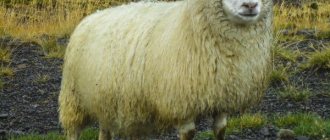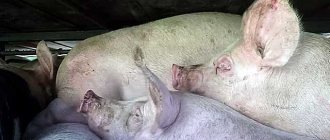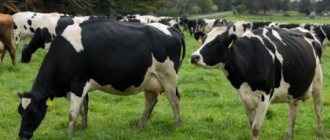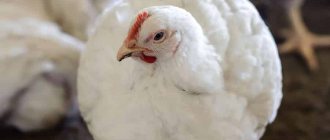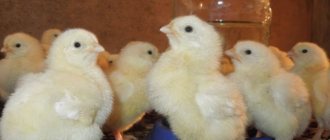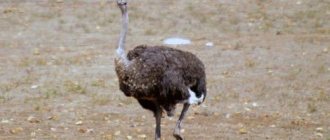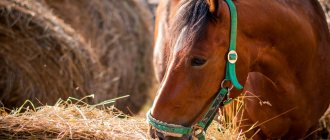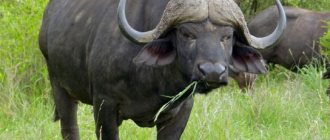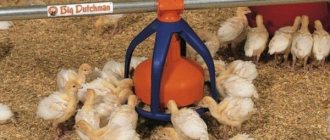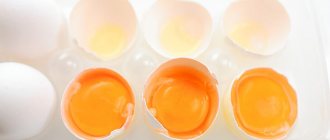Ducks are raised for meat and eggs. The birds have dense contour plumage and thick body down. Both down and feathers are used to make pillows and blankets. Many manufacturers cooperate with factories for sewing winter clothing. Breeding ducks will bring good income to the family budget.
It is necessary to choose the right breed of bird, study the feeding regime and the rules for keeping livestock. Which ducks are best to buy for meat, and which ones can you collect a large number of eggs from? Where will the bird live and how to feed it?
domestic duck
How much does a white duck weigh?
Comparison table for duck breeds
| Breed | Productivity direction | Weight, kg |
| Moscow white | meat | ducks - 3 - 3.5, drakes - 4 |
| Ukrainian | meat | ducks - 2.8 -3, drakes - 3.5 |
| Aylesbury | meat | ducks - 3, 5 - 4, drakes - 4 - 4.5 |
| Mulard | meat | ducks - 5.5 - 6.5, drakes - 6 -7 |
Factors influencing performance
The meat productivity of ducks lies in the mass and quality before slaughter. The quality of meat products depends on the breed and age of the individual. Feeding and proper care are important factors. The quality score is also influenced by protein levels, metabolic energy and diet. The level of fatty acid composition of meat depends on the amount of vegetable and animal fats added to the diet.
In addition to proper nutrition of ducks, the issue of their maintenance is also important. Individuals of the meat breed are unpretentious in maintenance and care. When breeding, choose one of two options for placing the bird: on the litter or in the aviary. In summer they are placed in a clearing with fresh grass near a pond. In winter, the livestock is placed in a warm room.
See also
How many days do ducks grow before slaughter and the table of meat yield based on live weightRead
Drinkers and feeders are installed in the poultry house. Enclosures are fenced off from each other. The room must have good ventilation. In the northern regions, heating is additionally installed in the poultry house. During breeding, birds must keep the air inside their enclosures clean and fresh. When raising ducks, take into account important points:
- No more than 3 adult ducks are placed per 1 square meter to eliminate the risk of infection or other diseases.
- Individuals are placed in spacious enclosures of at least 70*70 centimeters, with a height of 35 centimeters.
- More than 10 heads of young animals should not be placed on 1 square meter.
- If ducks are kept on a bedding, the floor is covered with hay or straw, first adding a layer of slaked lime.
- The floor is covered with a net, and trays are installed underneath to collect droppings, dirt, and feathers.
- The temperature in the poultry house should be within +7...+14 degrees, with an air humidity of 70 percent. For young animals, the air temperature is +22 degrees, with a humidity of 65 percent.
Before placing birds in cages for the first time, they are disinfected. The poultry house is ventilated, cleaned, feeders and drinking bowls are treated with an antiseptic. The enclosures are closed for quarantine for 20 days.
Breed of black white-breasted ducks
Using Peking, local white-breasted and Khaki Campbell ducks, a group of black white-breasted ducks was created.
Black white-breasted hens lay 120-150 eggs during the first egg-laying cycle, and the weight of live black white-breasted ducklings at slaughter age is 2.0 kg.
Ducks of these breed groups are mainly used by homestead poultry farmers.
Photos of black white-breasted and khaki campbell ducks
Who are the Mulards?
Muscovy ducks are crossed with other breeds to improve the latter's performance. Indo-duck drakes are usually bred with Rouen and Peking ducks, or with Orlingtons or white alliers. The sterile hybrids resulting from such mating are called mulards.
They are precocious and clean. They have a calm character and are in great need of human care. Their appearance has the following distinctive features:
- developed body with strong muscles and an elongated back;
- short legs of pinkish-yellow color, equipped with rounded jumpers;
- beak reddish in color;
- The plumage color is white except for an oblong black spot on the top of the head (in rare cases the birds are completely dark).
Mulards are good brood hens, but sterility has turned these birds into single-season birds. In a couple of months on regular grazing, one individual can gain up to 3-7 kg. At the same time, in order for them to grow quickly and gain up to 2.3-3 kg of weight, only 1 kg of feed is required.
A Mulard hatching egg costs 50-70 rubles (the cost is usually reduced when purchased in bulk).
Poultry breeds
Before purchasing a stock of ducks, you need to decide on your priorities. For meat production, livestock with meat productivity are purchased. Experts recommend considering broiler breeds. A distinctive feature of broilers is the rapid growth of young animals. At 60 days, the individual’s weight reaches the body weight of an adult bird. Young animals aged 50-60 days are used.
To obtain eggs, individuals with egg or meat-egg productivity are purchased. Laying hens do not have high body weight. The weight of an adult drake is no more than 2 kg. Females weigh less. Ducks will begin laying eggs at 6-7 months, depending on the breed. In egg-producing birds, puberty occurs faster. Than in individuals of meat-egg breeds. Which ducks are best for breeding at home?
| Name of the breed (cross) | Meat productivity | Egg production |
| Peking duck | Drakes weight – 4.5 kg; females – 4 kg. | 80-120 pcs., weighing 90 g. |
| Indoutka (musk) | Young animals 3 – 3.5 kg (adults up to 6 kg). | 110 pcs. in a year; weight 90 g. |
| Indian runner (fibrous meat, tastes like chicken) | Adult males 2 kg; females 1.5 kg; The weight of a duckling at 60 days is 1 kg. | More than 300 pcs. per year, weight 95 g; |
| Moscow white | 3 – 3.4 kg. | 100 pcs., weight 90 g. |
| Khaki Campbell (carcass fat percentage reduced) | At 60 days the individual weighs 800 g; the weight of an adult drake is 3.5 kg; females 2.2 kg. | More than 200 pcs., weight 80 g. |
| Black white breasted | 3.5 – 4 kg. | 120 pcs., weight 90 g; |
| Rouen duck | 3.7-4 kg. | 90 pcs., weighing 90 g. |
| Mulards (lean meat, dietary) | At 60 days – 4 kg; The weight of an adult duck can be more than 6 kg. | Females are sterile; young animals are sold at the age of 50-60 days. |
| Agidel | The weight of a duckling at 2 months is 3 kg; adults gain up to 7 kg. | 120 pcs., weight 90 g. |
Wild domesticated birds do not gain much weight even with good care. The body weight of an adult mallard or pintail will remain approximately the same as before the birds were domesticated by humans. How much does a wild duck weigh? The mallard drake can gain no more than 2.8 kg by autumn.
The ducks are not that big. Their weight on average reaches 2 kg. When fattening, birds can become obese. Wild poultry is not kept for its meat. It is a decoration of the courtyard, but it is necessary to build an artificial pond on the plot. Ducks won't live long without water.
When selling young animals at the age of 2 months, there is no need to equip a pond for them. They develop well both when kept in cages and on litter. For adult birds, it is recommended to build an artificial lake in the yard. A large container of water can replace it. In summer, the bird cools down in it. In winter, ducks clean their plumage from insects in the water. The containers are placed on a concrete pedestal so that the bedding indoors or in an open enclosure is always dry.
When considering these meat or egg-meat breeds, you should pay attention to mulards. When updating the livestock, they contact the manufacturer. Females are sterile. The parent herd is not made up of mulards. Young animals are sold at 50 days. To update the livestock, eggs or ducklings are purchased from the manufacturer.
Domestic mulard ducks
Productive and attractive
The black white-breasted breed of ducks appeared as a result of long breeding work. Drakes weigh up to 4 kg, and ducks weigh about 3.3 kg. From one duck you can get up to 130 eggs per year (the highest officially recorded result is 188 eggs).
Black Whitebreasts lay eggs well and consistently, so they are profitable to keep for their eggs, and not just for their meat.
The meat of white-breasted ducks is especially tasty, and their carcasses have an attractive presentation.
The cost of a hatching egg of white-breasted ducks usually does not exceed 50 rubles, and the degree of safety of the hatched young generation is 93%.
White-breasted animals have a noticeable appearance. Most of their body is covered with black feathers, but the chest, like the abdomen along the top, is white. The necks of females are decorated with a light stripe. In males, the top of the neck is covered with blue-violet plumage. The birds' legs are black. The beaks are dark gray.
Ukrainian gray and Ukrainian clay ducks
Based on the use of local ducks, Ukrainian gray and clay ducks were bred. Ducks of these breed groups are adapted to local climatic conditions.
The egg production of Ukrainian grays is 120, clay ones - from 120 to 125 eggs per cycle. The output is 75% and about 70%, respectively.
At 50 days of age, Ukrainian gray ducks weigh 2.1-2.2 kg, Ukrainian clay ducks weigh slightly less - 2 kg.
Pictured are Ukrainian gray ducks
Origin and domestication
According to the observations of scientists, all modern species of ducks descended from the once domesticated wild duck – the mallard. But as to when exactly this event occurred, opinions differ.
So, they call numbers from 1000 BC, when the domestication of wild ducks could begin in Asia, Europe, Africa and America. And at the same time, it is known that in the times of Ancient Rome, domestic ducks could fly, which is not typical for fully domesticated birds. In any case, ducks have been living in people's backyards for a very long time.
What to feed broilers?
Broiler purebred ducks are fed on the farm with combined feeds and kept in cages. For young animals, the starter version is used. From the age of one month, the mixture is used for adolescents. For the last 3 weeks, the young animals are fed the finishing mixture. The bird must be given plenty of drinking water.
In farmsteads and at home, a combined diet is used. It is suitable for floor keeping of livestock. Feeding is carried out 3 times a day. In the morning and afternoon, the ducks are given succulent food. In the evening, young animals eat grain mixtures filled with mineral supplements:
- in the first 10 days - the main part of the feed is green grass. It is given 20 g. The herb is mixed with bone meal, cottage cheese, and a boiled egg. Add 3 g of each ingredient. Add yogurt and 5 g to the mash. Separately prepare the grain mixture. It includes ground barley, 1.5 g, bran 5 g, fish meal 0.5 g, yeast 0.2 g. Chalk and cake are added 1 g each;
- Over the next 10 days (until day 20), potatoes are gradually introduced. The diet consists of a grain mixture, 60 g. The mixture is prepared from barley, corn, peas, and oats. Greens are given 30 g. Boiled potatoes - 20 g. They continue to give yogurt, 10 g and cottage cheese 8 g. 3 g of sunflower cake, 15 g of bran, 0.4 g of yeast, 1 g of bone meal, 2 g of chalk are added to the grain mixture. Ducklings begin to be given gravel, 1 g per head;
- Days 21-30 – grain mixture 85 g, 50 g greens, 40 g potatoes. Cottage cheese is given 10 g, curdled milk 20 g. The portion of bran is increased to 30 g, cake to 8 g. 2 g of chalk, 1 g of baker's yeast, 1.5 g of bone meal are added to the grain mixture. Start giving table salt, 0.2 g;
- Until day 50, a domestic duck eats 110 g of grain, 70 g of greens, and 60 g of potatoes. Ducks eat 35 g of bran, 15 g of cake. Add 5 g of chalk, 2 g of bone meal, 1 g of salt. 2 g of gravel per head;
- up to 70 days - the portion of the grain mixture is 140 g, greens 80 g, potatoes 80 g. Bran is introduced 40 g, cake 20 g. Yeast and table salt continue to be given. The amount of chalk is increased to 6 g, bone meal to 3 g.
Broiler ducks
This diet will allow broiler ducks to gain a live weight of more than 3 kg. If the region is unfavorable for any poultry disease, the veterinarian may prescribe the use of antibiotics. It is recommended to solder with potassium permanganate once a week. Vitamin mixtures can be added to the food or water.
Content
A duck house is a dry and warm room without drafts, but well ventilated and lit throughout the year.
A bedding of at least 30 cm in thickness made of straw, sedge and peat is laid on the floor of the poultry house. Clean the room every day and ventilate it well.
A hole for ducks is made in the southern wall of the poultry house, measuring 40 by 40 cm. And it is taken out to a walking area, which must be fenced with an aviary one meter high. In summer, ducks are also walked on the water, where a fence is made a meter under the water and half a meter above its surface. A summer place for walking ducks should be in the shade.
In winter, in calm weather and at temperatures above -10 ° C, the ducks are also allowed out for walking, for which purpose the area near the poultry house is cleared of snow and a flooring made of straw is made.
In winter, the air temperature in the poultry house should not fall below 5 ° C, while ventilation and the absence of dampness are ensured. The period of artificial lighting per day must be at least 14 hours.
Poultry house equipment
For domestic ducks, wooden feeders are made from thick boards with a bar on top that will not allow birds to climb inside.
Drinkers can be made of either wood or metal. Their quantity and volume are calculated based on the fact that one duck will need about 1.6 liters of clean water per day. The height of the drinking bowl is about 20 cm, so that the bird can drink comfortably.
Nests are arranged along the walls of the poultry house in the darkest places where the duck will feel calm and safe. The material for the nest is plywood or timber. Size – 40 cm by 50 cm, height – 50 cm. One nest is enough for three birds.
Reproduction
Not all breeds of ducks make good brood hens. So, Pekin ducks are not suitable for these purposes, but musk ducks are distinguished by a developed instinct for incubating eggs. Therefore, before the duck begins to hatch, it is checked on “deceptive” eggs.
Each duck should have a separate, closed and spacious nest with soft material as bedding.
One hen usually hatches up to 20 eggs, leaving the nest only for bathing and feeding. Pekin ducklings hatch on the 28th day, musk ducklings on the 35th.
Duck eggs can be incubated at 38°C and good ventilation. On the 20th day, the temperature is reduced to 30 °C.
Bashkir birds are record holders for egg size
Ducks of the Bashkir breed are presented in two varieties. The division depends on the color: khaki, or black with a white chest color.
Colored birds are characterized by flat heads and the presence of a large curved nose. Their muscular legs are spread wide apart. Bashkir Khaki is one of the most successful ducks for home breeding.
It has the following characteristics:
- unpretentiousness, ability to endure harsh winters;
- strong innate immunity;
- the ability to increase weight up to 4 kg by the second month of life;
- unique egg production (lays the largest eggs, 230 eggs annually);
- high percentage of survival of young animals;
- especially tasty meat with a high fat content;
- significant meat yield (up to 70% of the total weight);
- egg hatchability up to 80%;
- precocity;
- good preservation of the duck flock.
Hatching eggs of this breed cost 20-30 rubles. After hatching, Bashkir ducks take 52 days to reach marketable maturity. During this period, pets must be provided with regular boat trips.
Breeds that are most popular
The best breeds known in Russia and the CIS countries are the Bashkir, Musk, as well as Peking and Ukrainian.
This series also includes blue favorites and mulards. You can read more about the latter in the article “On raising mulard ducks.”
Rarer pets that can be raised are the Black White-breasted, a member of the Rouen breed, specially bred for the meat industry. Also worth a look is the Swedish blue duck.
Criteria for choosing ducks for meat
When thinking about what birds to get, remember that the success of short-term (60-day) fattening of a meat breed duckling directly depends on how high quality the chosen bird turns out to be.
In order not to make a mistake in this regard, pay attention to the following characteristics of pets:
- unpretentiousness to the conditions that the owner provides them and the temperature regime;
- vitality and activity;
- general physical health and absence of deformities (crooked paws and beaks, broken wings);
- rate of muscle mass gain;
- fat content and nutritional value of the resulting meat;
- amount of food eaten;
- state of immunity (resistance to diseases);
- age of puberty;
- hatchability.
In addition, in already adult hens, fertility, the severity of the maternal instinct and the safety of the herd raised for meat should be assessed.
We hope you were able to decide which breeds of ducks are best to raise for meat. In this case, like and repost. And if you have any recommendations for inexperienced poultry farmers, be sure to leave a comment.
Peking duck
Among fans of common ducks, the Peking duck is gaining momentum. Let's consider all the advantages of this breed:
- rapid weight gain;
- high egg production;
- light plumage, simplifies the process of plucking the carcass;
- adult weight 4 kilograms;
- there is no need to hold the animal for a long time;
- inexpensive cost.
Minuses:
- restlessness, loudness;
- requires a body of water for swimming;
- you need a lot of feed;
- after molting, the animal loses weight and loses the juiciness of the meat;
- increased fat content.
